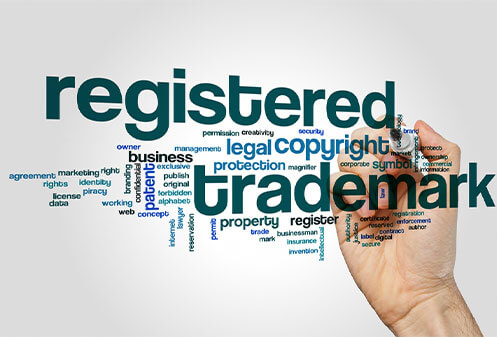Registering a trademark is not an easy task. It is filled with a lot of complexities. That’s where our team comes in to help file your trademark registration application in 3 simple steps.
To start the registration process, we ask our customers to fill our online brief form that requires some basic information about the customers and their business.
Before initiating your trademark registration process, we perform a thorough trademark search, scanning a multitude of trademark databases at national and international levels.
When all the documentation and trademark research is complete, we file your trademark with UNITED STATES COPYRIGHT OFFICE (USCO).
Trademark Filer USA protect your valuable assets and establish your rights on them by registering your trademark. The successful registration of your trademark to USPTO will help you strengthen your future claims if you take legal action against any illicit changes and infringement towards your valuable properties.
Our team scans trademark databases with a comprehensive trademark search to check if your trademark is entirely new and original. After researching federal and international trademark databases, our team provides a detailed report with all the matches and similarities with your trademark.

Get Our Trademark and Copyright Registration Services at Economical Pricing
We have attained countless customers from around the world by providing flawless services.
Still have questions? Call +1 323 657 0560 or LIVE CHAT with us for real-time support.
Generally, a trademark is a word, phrase, symbol, or design that identifies and distinguishes the source of the goods of one party from those of others. It protects the branding under which products and services are sold.
If your trademark is not registered, then someone else can copy it. This immediately puts your business at risk. A registered trademark protects your brand, and provides you with the tools to prevent someone using similar signs to ride off the back of your business. In addition, if your trademark is not protected by registration, then you may find you are legally prevented from expanding your business. With your brand registered, you have rights to take actions against parties who have attempted to register conflicting trademarks, or are operating with conflicting brands and damaging your business.
Trademark Filer USA has a brilliant group of intellectual property attorneys who can advise you on every stage of the development and life cycle of rights such as patents, copyright, trademarks and database and design – from creation to enforcement. Call us now for more details.
Types of trademarks for products include five main categories: generic mark, descriptive mark, suggestive mark, fanciful, and arbitrary mark.
The strongest type of trademark is a “fanciful” mark, which is a made-up word or phrase. Famous brands “Xerox” and “Kleenex” are examples of fanciful marks.
An arbitrary mark, such as “Apple” for a computer brand, is another strong type of trademark that uses a real word or words in an unexpected or unusual way.
A “suggestive” mark hints at some characteristic of the products or services covered by the trademark. Suggestive marks combine an imaginative element with a descriptive element. Examples of suggestive marks are “Roach Motel” for a cockroach trap, or “Pizza Heaven” for a restaurant.
A “merely descriptive” mark lacks an imaginative element, and is therefore not strong enough to function as a trademark on its own. As an example, “The Meatball Bar” would be considered “merely descriptive” of a gastropub that serves meatballs. If the government deems your trademark to be “merely descriptive,” you will have to prove you’ve been using it in commerce for more than 5 years, or add a substantial logo design. You will not be able to claim exclusive rights in the descriptive parts of the trademark name; these will have to be “disclaimed.”
A copyright helps secures creative or intellectual creations. Trademarks protect the branding under which products and services are sold.
Copyright law protects any original work of authorship that is fixed in a tangible form. This may include literary works, musical works, dramatic works, pantomimes, and choreographic works, pictorial, graphic, and sculptural works, motion pictures and other audiovisual works, sound recordings and architectural works.
A copyright registration is used to place on record a verifiable account of the date and content of the work in question, so that in the event of a legal claim, the owner can produce a copy of the work from an official government source.
Reputation is earned with hard work. Make an effort to protect it!